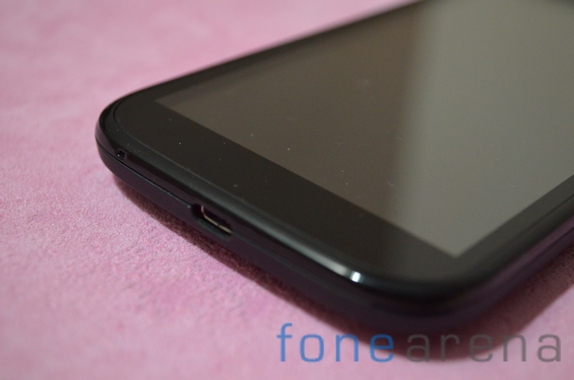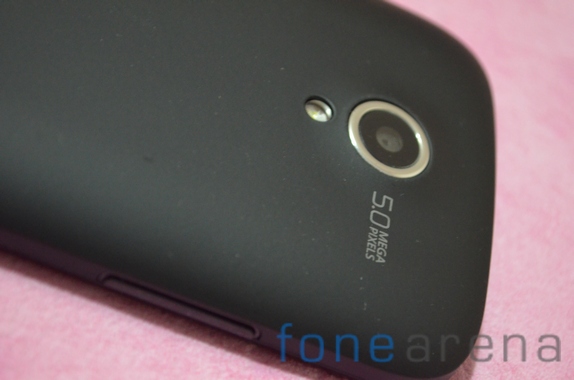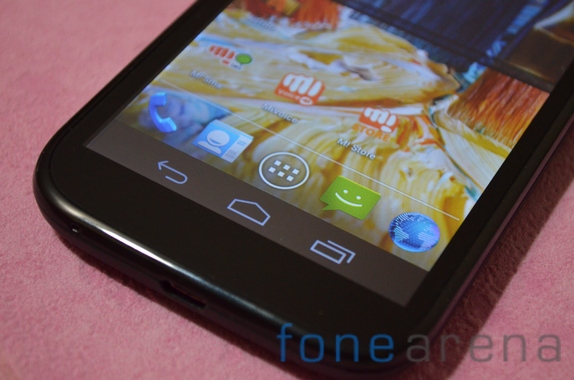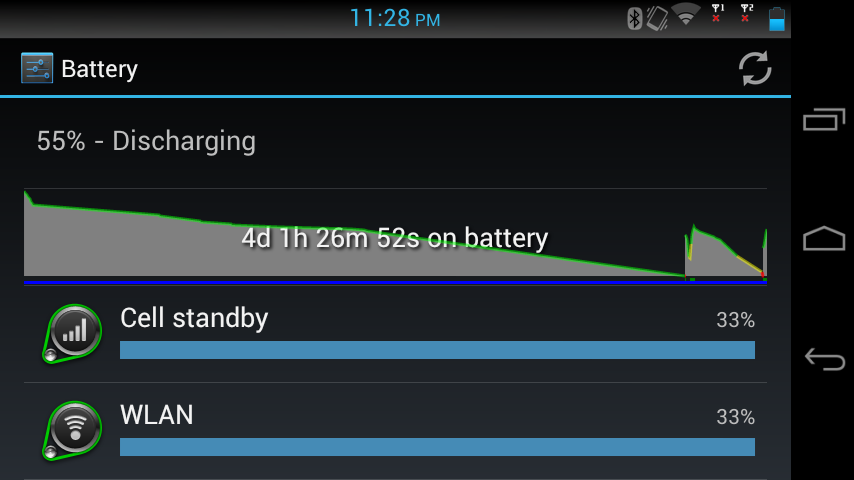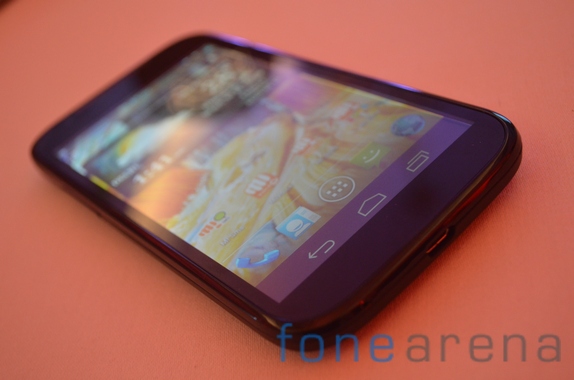Micromax, the popular Indian cellphone brand, recently launched a whole host of Android devices. Of these, the Micromax A90 and A100 stood out as they both brought something very unique at an unprecedented price point.
We reviewed the A90 and were suitably impressed, can the Micromax A100 repeat that ? Read on the full review below to find out.
Unboxing
There’s not much in terms of bundled accessories with the Micromax A100. The contents include a charger, USB cable and a earbud style headset. Check out the unboxing video below.
httpv://www.youtube.com/watch?v=WLtnTQu63_A
Hardware
Micromax has stepped up its game when it comes to hardware quality. The phone feels very solid and has a good heft to it. The front of the phone is dominated by the massive 5 inch display.
Micromax has gone with a very clean hardware design with a focus on minimalism. On the right is a power key while the left has a volume rocker. There is no camera key and the usual capacitive buttons have been replaced by on screen versions of the same.
The top of the phone sports a 3.5mm jack. The micro USB port at the bottom of the phone facilitates syncing and charging.
At the back of the device we have a 5MP camera alongside a single LED flash. The entire back panel is made of a rubberized material making sure that you have a great grip on the phone. This goes a long way in ensuring that the massive phone does not fall out of your hands.
Screen
The USP of Micromax A100 is its giant screen at an affordable price. The idea was to replicate the Galaxy Note’s success at a fraction of the price but we’re not so sure that the company has succeeded.
WVGA or 800×480 resolution is hardly anything worth talking about but stretched out over a 5 inch panel, you definitely notice the shortcomings. With a PPI of 186.59, everything ends up looking blurry. We’d rather have a smaller screen with the same resolution like on the A90.
Even if you can get past the low resolution, things don’t look that good for the A100’s screen. Brightness levels are limited and visibility in the sun isn’t that good. The display panel is not covered by a Gorilla Glass and is quite prone to scratches.
Performance
Powering the Micromax A100 is the Qualcomm MSM7627 chipset with Adreno 200 graphics. This is a single core chip which is a part of the Snapdragon S1 series of SoCs. In terms of performance, it is works out fairly well for the budget segment devices.
Compared to its competitor from the same stable, the A100 comes close in terms of Quadrant scores which is 2231 vs 2370 on the A90. The Quadrant benchmark measures CPU, I/O and 3D performance. So far so good.
In terms of browsing, the A100 tends to lag and particularly struggles with heavy websites. This is backed up by synthetic benchmarks where with a score of 59,104 , the A100 lags significantly behind the A90 which scores 74493.
The A100 scored just 2414 in Antutu which is quite a poor score. Its worth noting that the low scores are more likely due to the customizations done by Micromax which we shall discuss more in the next section than the actual SoC.
Software
In a sharp contrast to the pure Android experience on the A90, Micromax has instead skinned the interface on the Micromax A100. Instead of heavily customizing the user interface, they’ve instead gone for subtle additions.
The drop down menu has quick access toggles and there are custom icons all around. Micromax has bundled in a lot of applications it considers ‘essential’ for users.
Micromax has its own take on an app store preloaded on the phone. There are alternative SMS and calling apps too though you are never forced to use them. The OS running the show here is of course Android Ice Cream Sandwich ie Android 4.0. As with the Micromax A90, we wouldn’t hold out for an upgrade to Android 4.1 JellyBean.
Camera
The camera on the Micromax A90 is 5MP. The image quality is strictly average. Daylight images are quite alright but there is noticeable banding as soon as the light levels go down.
Indoor photographs aren’t anything to write home about. The LED flash isn’t the most powerful out there but comes in handy as a fill flash for close ups.
httpv://www.youtube.com/watch?v=Z5tGWS_3dD0
The maximum video recording resolution is 480p. Frame skips were few and far within so this should serve well to record impromptu moments.
Multimedia
There’s about 2GB of storage available on board but not much of it is user accessible. You will be served well by picking up an extra memory card. The format support is quite comprehensive and it was able to playback a wide range of music and video files encoded in various codecs. Talking about codec compatibility is fairly moot when talking about Android devices mid range onwards as you always have the option to install a 3rdparty player which can play even more formats !
Battery Life
The battery on the Micromax A100 is a 2000 mAH unit which manages to power the device for well over a day. Basic usage involving a few phone calls a day and a bit of messaging, music, we got almost 3 days of battery backup.
Even on pushing the device, it managed to last through a work day. You really won’t have much to complain about in terms of battery life.
Conclusion
We’re in two minds about the Micromax A100. There’s nothing blatantly wrong with the phone but the Micromax A90 is just that more appealing as a phone. We would wholeheartedly recommend stepping up to A90 for the brilliant Super AMOLED screen. That said, there’s a lot to like about the A100 as well.
It keeps up with its contemporaries and provides a good balance between performance, price. You’ll be hard pressed to find a phone of this class with such great battery life as well. The call quality is above average and you will appreciate the presence of dual SIM card slots. All in all a very decent package for under Rs.10,000.
Pros
1. Great battery life
2. Large screen
3. Well built
Cons
1. Average camera
2. Low inbuilt storage
3. Low resolution screen



